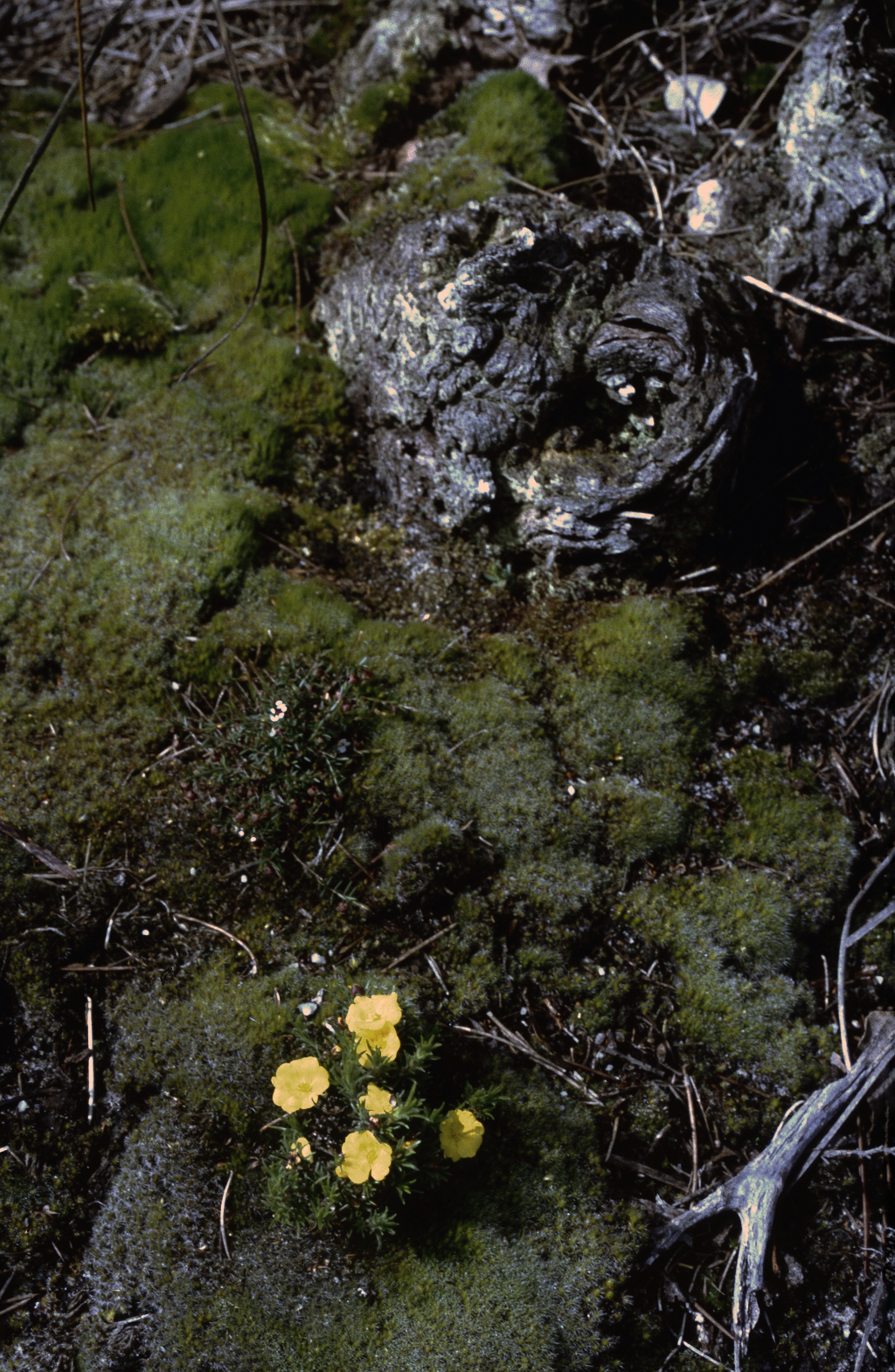Hibbertia procumbens
(Labill.) DC.Prostrate shrubs with glabrous to pubescent branches to 30 cm long, often mat-forming. Vestiture of forward-directed simple hairs often coiled or crisped. Leaves linear-elliptic, 3–19 mm long, 0.4–2.1 mm wide, glabrescent with hairs mainly along the margin; apex acute often becoming obtuse; upper surface furrowed above, convex below. Flowers sessile, terminal, with a cluster of 2–6 sheathing leaves with progressively reducing blades; sepals 5.3–10.5 mm long, unequal, glabrous to puberulous; petals obovate, 4–15 mm long, bright yellow; stamens 18–25 in groups around the ovary; filaments free; carpels 4 rarely 5 or 3, glabrous. Flowers Oct.–Dec.
GleP, GipP, OtP, WaP, DunT, EGL, EGU, WPro, HSF, OtR, Strz. Also NSW, Tas. Occurring mainly in open sandy areas near the coast, usually in association with heathland, less commonly in forested areas. Plants from the Otways tend to have larger flowers than other populations and are mostly, if not always, 3-carpellate.
Toelken, H.R. (1996). Dilleniaceae. In: Walsh, N.G.; Entwisle, T.J., Flora of Victoria Vol. 3, Dicotyledons Winteraceae to Myrtaceae, pp. 300–313. Inkata Press, Melbourne.
 Spinning
Spinning
